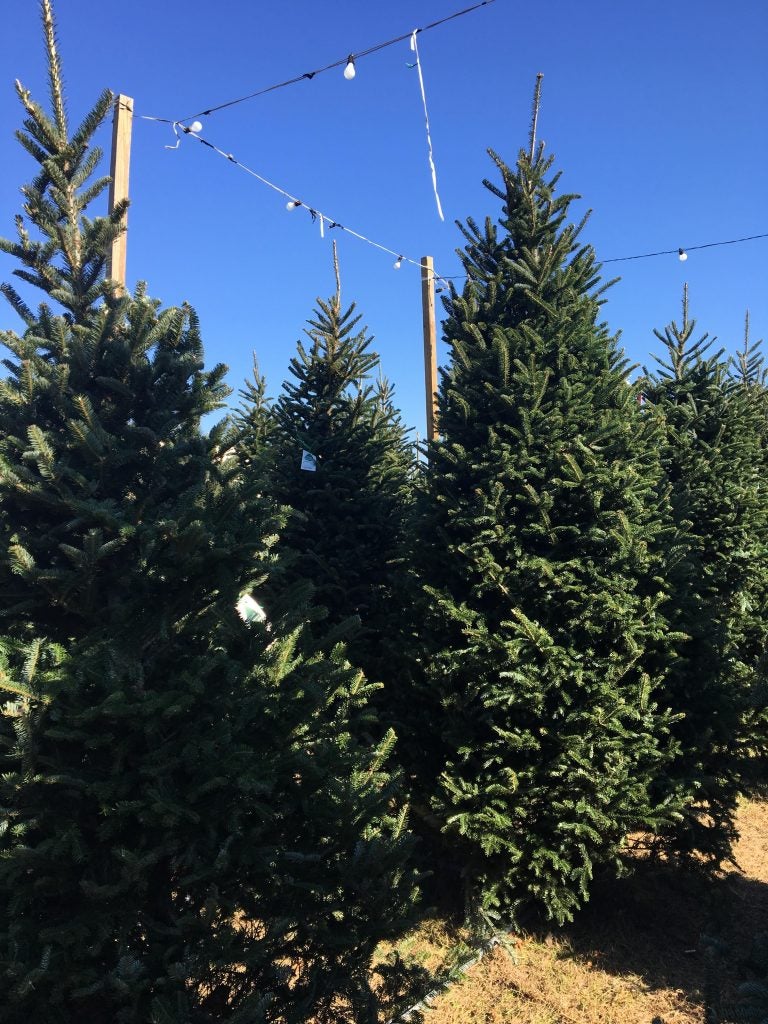Real versus artificial Christmas trees

Farmed Christmas trees are grown specifically for the purpose of being used as a decoration and do far more to benefit you and the environment. (Photo by Angela Todd)
The holidays are upon us, and with them comes the task of decorating. East Carolina University arborist and grounds supervisor Gene Stano helps answer a question many homes face this time of year – is purchasing a real tree or artificial tree better for the environment?
Stano, a former Christmas tree farmer, says many people are under the impression that using an artificial tree saves a real tree from being cut down and is better for the environment. However, farmed Christmas trees are grown specifically for the purpose of being used as a decoration and do far more to benefit you and the environment in the process.
Real Christmas Trees
- Real Christmas trees continue to filter the air and produce oxygen inside your home. “It’s still alive for a while,” said Stano. “It continually tries to support itself as long as it can. When you bring a real tree into your house it is providing oxygen to your home and cleaning the air. It does the same things that it would do outside, just at a diminished capacity as it slowly dies down.”
- Real Christmas trees can be recycled in many ways. They can be placed on beaches and river banks to help prevent erosion. They can also be turned into mulch, which improves soil quality and ensures that the nutrients found in the tree are returned to the environment.
- In western North Carolina, Christmas tree farms are replacing old and unused farming land that was originally cleared to grow other crops, such as tobacco. “You’re taking care of farm land that would have sat fallow and eroded and had all kinds of other problems and turning into a useful area,” said Stano. The trees filter the air and their root systems help prevent flooding by absorbing excess rain water that otherwise would have nowhere to go in an empty field.
Artificial Trees
- Most artificial trees are made from a type of plastic called polyvinyl chloride (PVC). It is non-recyclable and according the 14th Report on Carcinogens by the National Toxicology Program, PVC is a known human carcinogen.
- The U.S. Commerce Department reports that 85 percent of artificial Christmas trees are imported from China. Buying trees grown by North Carolina farmers helps support the local economy and reduces environmental impact by eliminating the need to burn fuel for transcontinental transportation.
Some people may not be able to tolerate a real tree in their home because of allergies or other medical reasons. However, if you are able to have a real tree in your home this holiday season, it is an option that’s certainly worth looking into, Stano said.
“A real tree is doing what it can to help in the environment as opposed to an artificial one,” said Stano. “Even if you keep an artificial one for 10 years, you eventually have to pitch it. And then guess where it goes? Right into the landfill.”
-by Angela Todd, University Communications